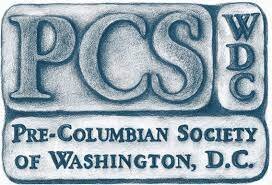Creating Communal Places: Ritual Practices at Early Platform Mounds in the Deep South by Megan Kassabaum, PhD
This meeting will be held at the Charles Sumner School, 17th & M Streets, N.W., Washington, D.C.
The meeting starts with refreshments at 6:45 pm and the lecture begins at 7:15 pm.
Note: This meeting will be held the first THURSDAY rather than Friday.
Moundbuilding has a long history in the American South, possibly beginning as early as 5000 BC. Around AD 700, an important shift in moundbuilding practices took place. This shift to the construction of platform mounds is often assumed to be associated with parallel shifts in the economic, social, and political realms of the mound building communities. Recent research at two mound centers--Feltus Mounds and Smith Creek Mounds, MS--constructed during this time has suggested that the relationship between these various changes is more complicated than often assumed and that it was negotiated through communal ritual practices.
Megan Kassabaum is an Assistant Professor of Anthropology at the University of Pennsylvania and Assistant Curator in the American Section of the Penn Museum. She completed her PhD in anthropology at the University of North Carolina in 2014 and her BA in anthropology and philosophy at Beloit College in 2005. Her research focuses on prehistoric American Indian communities in the Lower Mississippi Valley, where she has been conducting excavations since 2006. Her interests in the Native communities living along the Mississippi River developed during her childhood in St. Louis, Missouri. She has been running the Smith Creek Archaeological Project, located in southwestern Mississippi, since 2015 and has recently completed her second season of fieldwork at the site.

